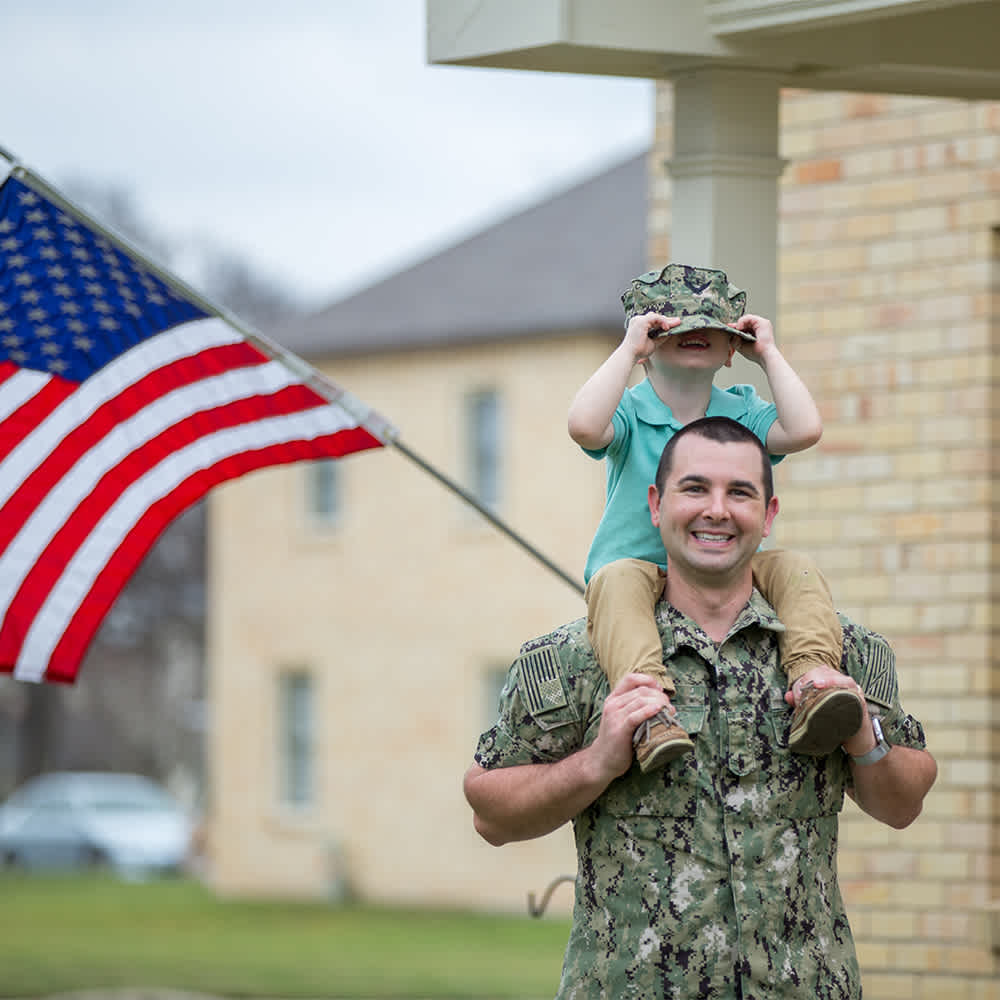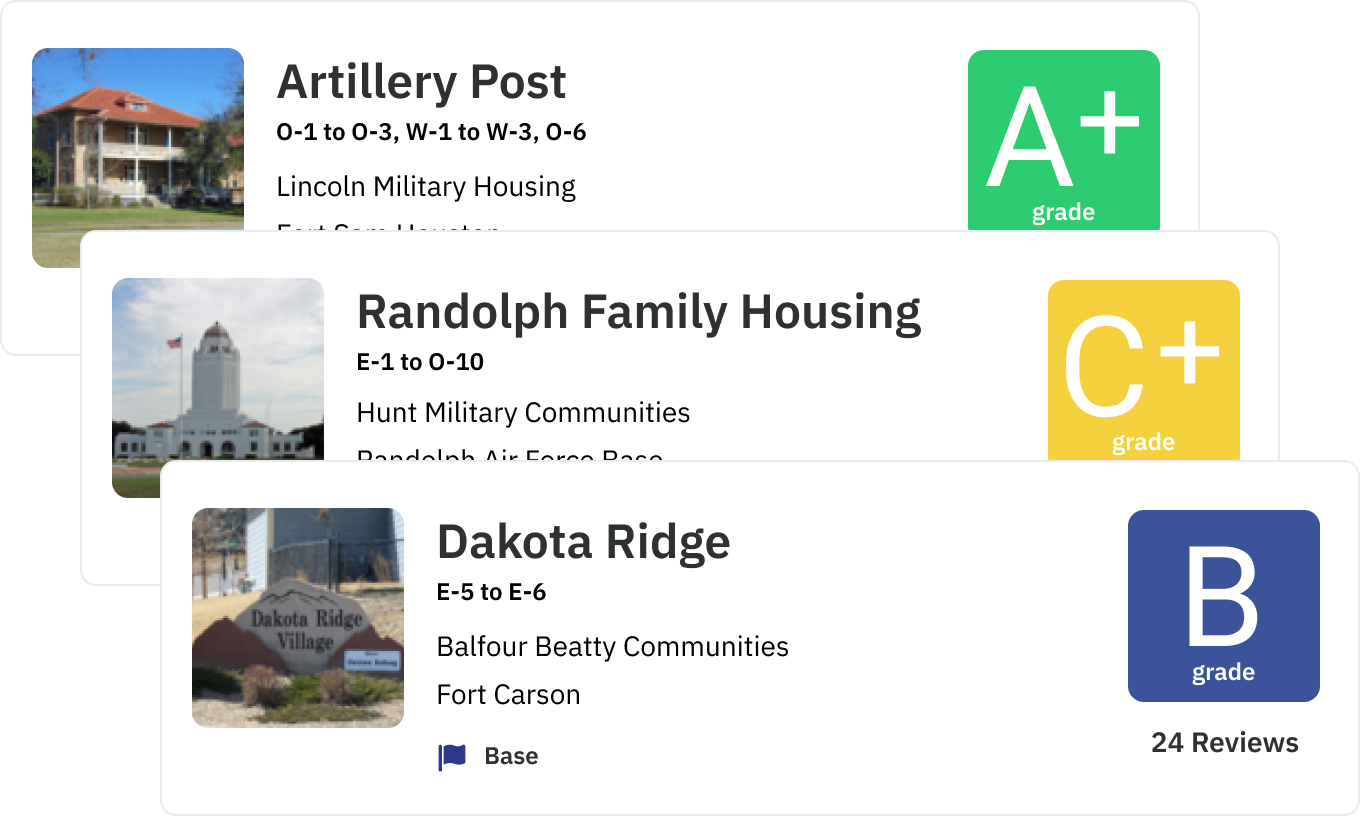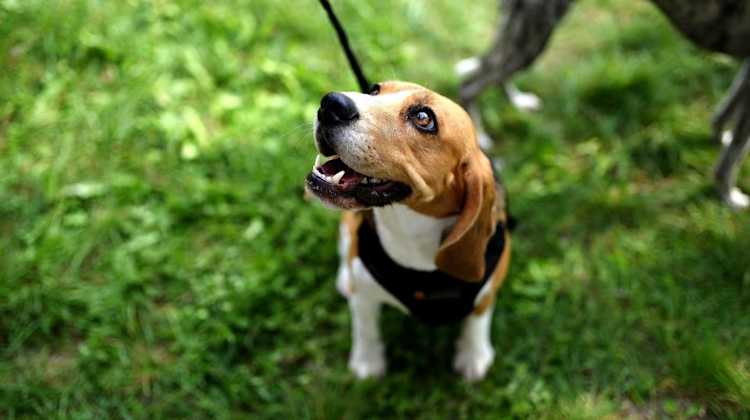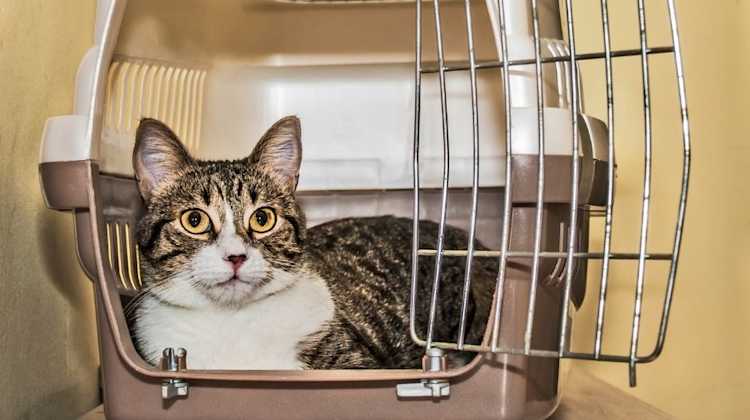Webinar: PCS With Pets
by Lizann Lightfoot - January 25th, 2022

Our Guest: Rachel Slack, of PCS with Pets--powered by Purina. I have traveled everywhere with my dog because of military life--road trips, overseas to Japan, and other states and even Canada on vacations.
What steps do you need to take prior to moving when you are CONUS (Continental United States)?
You need to first decide on transportation. Are you going to fly, drive, stay in hotels, drive your own U-Haul, send half by plane and half driving, etc. The way you move will determine how you pack your pet and what you need to do to plan or prepare for the move.
What do you need to prepare when moving with pets OCONUS (Outside the Continental United States)?
Moving overseas is definitely a challenge. You need to pay attention to paperwork, make sure your pet’s shots are up-to-date. They should get microchipped, because a lot of overseas bases have vaccination and quarantine requirements. You need to have the microchip, plus two rabies shots after the microchip. It can sometimes take almost six months ahead of the move to work out the shots, and the quarantine timing.
How do you recommend pet owners stay organized before a move?
I like to keep all my pet’s records and shots in one place, in a binder I can easily carry with me on a move. You can use an accordion binder, a file folder, or an “I love me” binder” with the clear pages. This should definitely move with you as a hand-carried item. Do not let the movers pack it up with your household goods!
As the owner of a pit bull, what can you tell us about restricted breeds?
Unfortunately, there aren’t a lot of resources or options for that situation, since some breeds are restricted in overseas locations. In most domestic bases, you are able to choose to live off base, so plan to rent or buy a home in the local area that will allow your pet to join you.
However, if you are living overseas, some locations have mandatory requirements to live on base, as long as there is housing available. So if you get orders to live overseas, look up the breed restrictions and the housing requirements. If base housing is full, you may be able to live off base with your restricted pet. But otherwise, you may need to make other plans if you are required to live on base and can’t have your pet with you.
What do you need to have with you when you travel by plane, in cars, etc?
When I go by car, I have a hammock he can lay in, plus his blanket. I have some collapsible walls for travel too. I bring extra water for rest stops, and sometimes a toy or two. But he is pretty laid back, so he is a really easy travel companion, and I don’t need to worry too much about him getting hyper in the car.
When traveling by plane, it’s a little different. We took the AMC (Air Mobility Command) flight to Japan and our flight was freezing. I was bundled up with coats and a blanket. My dog was in the cabin with us, so it’s definitely helpful to bring extra blankets. I also bring a chewing stick so he can gnaw on that and it helps his ears to pop.
What has been your experience in airports with pets during PCS moves?
Flying to Japan was not the first time I flew with my dog. We had also flown cross country and to the Bahamas. I will say, my first flight was an absolute nightmare. We got off the flight, and my dog got sick in the middle of the airport by the gate, and then again on the plane! It was horrible and I never wanted to deal with that again.
Pets do get stress and anxiety. How can we help our pets manage anxiety during a PCS move?
When dogs get stressed, they do start to overheat. I use a cooling vest that helps mine stay calm, and allows him to control his temperature when we are sitting in a plane and the air isn’t circulating yet. That was one of the issues on that first flight-- I was sweating so I knew my dog was overheating too. There are also motion medications you can discuss with your vet, such as Trazodone or Benadryl, so discuss that with your vet before you travel.
What are your tips for finding a new vet at the next duty station?
I like to stick with the vets on base because they are less complicated, and they tend to be cheaper than civilian vets. Also, if you get orders overseas, they already know the checklist of what you need for vaccines, microchips, etc, so they can help you stay on track. Plus, they know to sign documents in black ink, not blue, so you won’t have to get paperwork redone!
We occasionally get questions about moving with pets besides cats and dogs. Any advice for people with guinea pigs, fish, or other pets?
It doesn’t come up often, because at many OCONUS duty stations, you aren’t allowed to bring pets besides cats and dogs. However, it is an important thing to know when traveling to Hawaii or Alaska (which are considered OCONUS assignments). Guinea pigs, for example, would not be placed in cargo. They can travel in the cabin with you, like cats. However, that may only be allowed on certain flights or depending on availability.
How do you find pet-friendly hotels during a PCS?
You can always Google pet-friendly hotels, because it is becoming more common, so check the area where you are staying. Some chains are always pet-friendly, like Extended Stay America.
What can you tell us about the cost of PCSing with pets?
This is the biggest challenge that military pet-owners discuss during PCS moves. Going overseas is especially difficult. The AMC flights only have about 10 spots in the cabin for animals like cats, and 10 spots in cargo for dogs. Those fill up VERY quickly! Six months ahead of time, they are probably filled, and you will be put on a waiting list. Also, each family can only get two spots total, no matter how many pets you have. So if you have pets, you should always be saving money and setting some aside for your next move. It can cost $3,000 to fly with a small dog, and I know someone who was quoted $8,000 for a cat or $10,000 for a dog. Timing does matter because summer is peak season, but there is a heat embargo on many airlines during summer. It is always cheaper to fly in the airline’s cargo, rather than hiring a third-party carrying service.
If there is no space on the “rotator,” which is the AMC flight, then the military will tell you to fly commercial, which means you are on your own for the pet arrangements. If you are flying commercial, plan to spend at least $3,000 per animal to fly overseas. Some people are quoted up to $12,000 for a large dog.
Remember that cats will need to be in smaller soft carriers that can fit under the seats, so check the flight requirements ahead of time.
If your pet needs insulin or meds during quarantine or a long flight, who gives it to them?
The airlines are not responsible, The pets will be pulled out at each layover, so you can walk them and give them food or water. So if you need to time medicine doses, discuss the trip ahead of time with your vet and determine when to give each dose. During quarantine, pets can sometimes be held for a long time, so ask all those questions and get details ahead of time.
If you are in need of financial assistance for moving with your pet, we have a $500 gift card giveaway to help military families within 6 months of their orders who will use a third-party shipping carrier. Visit our website to be entered to win!







